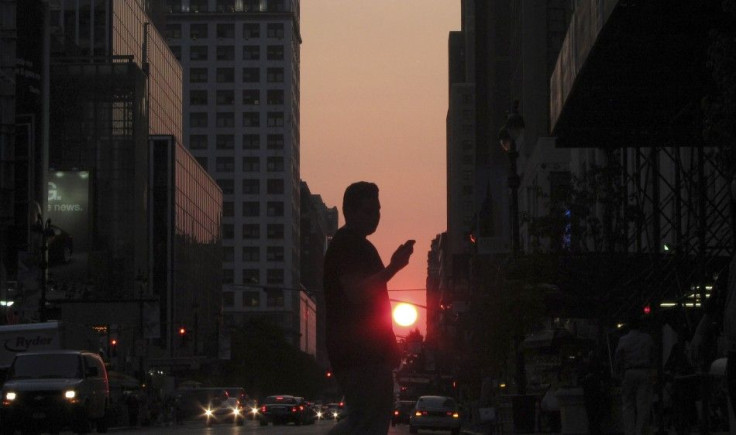Sweltering Heat Wave Continues in Midwest, Southeast States

A heat wave could be coming your way so grab your water bottles and stay hydrated, especially if you are in the Midwest or Southeast this week, as the National Weather Service issued an excessive heat warning for those states today.
The warning states that dangerously hot and humid weather is expected to continue through Wednesday across much of those areas until 7 p.m. Wednesday.
The National Weather Service warning states that very high low-level tropical moisture from the Gulf of Mexico combined with a ridge of high pressure is causing the very hot and humid weather across these areas.
The agency further states that a combination of the very hot temperatures and high humidity will cause dangerous heat reading above 110 degrees today and between 105 and 115 degrees on Wednesday, when scatter showers and thunderstorms may bring some relief.
CNN is reporting that the National Weather Service had 23 states under heat advisories on Monday.
Some states that were listed on the National Weather Service's warning include Tennessee, Oklahoma and Kansas.
The Kansas City Star published an Associated Press report stating that the heat wave is smothering residents, crops and animals alike.
Hutchinson, Kan. was listed as one of the hottest spots in the nation as Sunday after temperatures hit 112 degrees and Wichita hit 111, National Weather Service meteorologist Chance Hayes told the Associated Press on Monday.
Records show temperatures of 111 have been reached only ten times in Wichita since 1888, according to The Associated Press article.
June also brought extreme temperatures and precipitation across the U.S., according to a National Weather Service press release, as an oppressive heat wave, accompanied by intensifying drought conditions, shattered temperature records in the South and Southwest.
The nation had its 19th driest and 26th warmest June on record, according to scientists at the National Oceanic Atmospheric Administration's National Climatic Data Center in Asheville, N.C.
The average U.S. temperature in June was 70.7 degrees (F), which is 1.4 degrees above the long-term 1901 to 2000 average, according to the National Weather Service. Meanwhile, precipitation across the nation averaged 2.48 inches. That figure is 0.41 inch below the long-term average, with large variability in different locations, the National Weather Service states.
© Copyright IBTimes 2024. All rights reserved.












